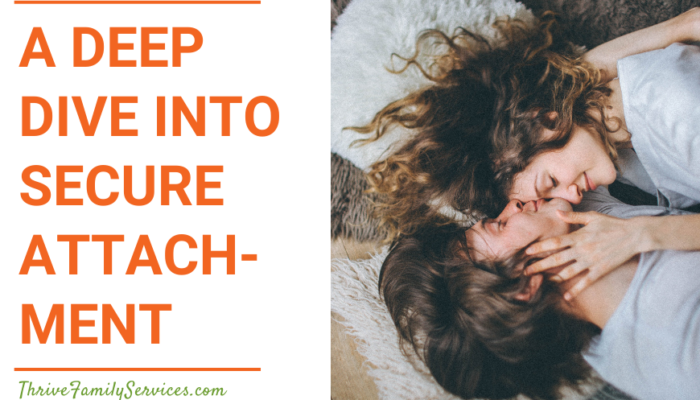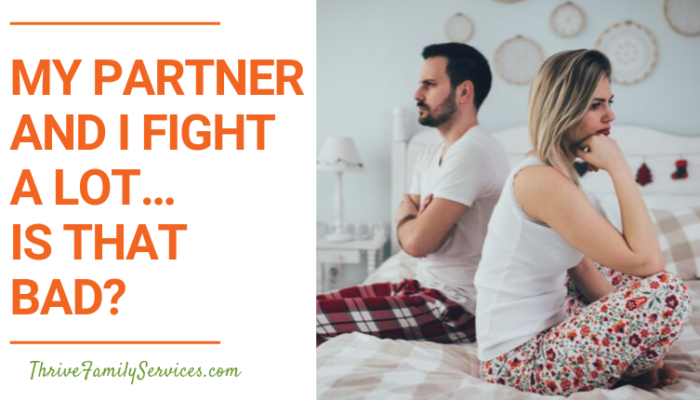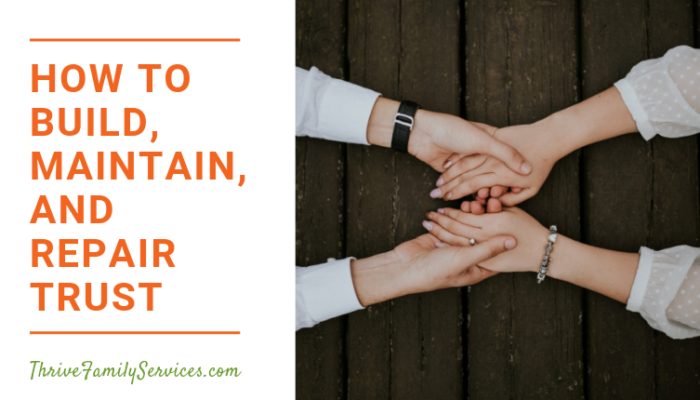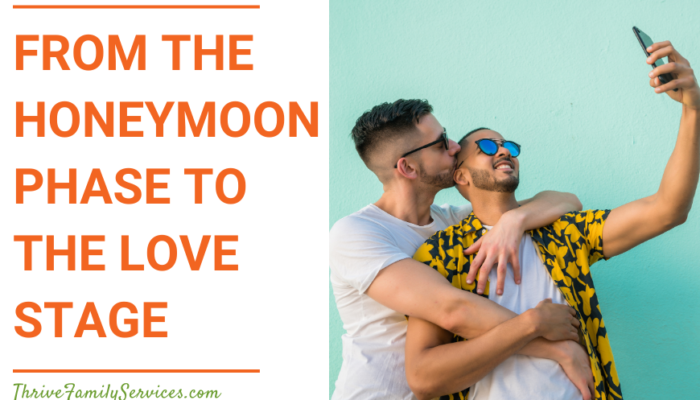What Are Attachment Styles?
As a relationship therapist, there is one blatant fact about humanity that shows up with every client that I see: People are wired for connection. In fact, people will do whatever they feel like they need to do in order to ensure that their relationships survive for their own well-being.
From birth, babies need other people for survival, and this fact stays consistent across the lifespan. No matter how old a person is, humans need connection with other people to thrive.
Scientific research shows that people with at least one secure, connecting relationship live longer, happier, healthier lives than people who do not.
When a person loses connection with other people for a period of time, their brain actually starts to deteriorate, feelings of fear and anxiety start to escalate, and their body’s stress response goes into overdrive.
Have you ever tried to go to work while in the middle of a fight with your partner? Chances are that it was difficult to stay focused and present at work because the feelings of a loss of security are so intense.
This need for human connection is actually one of the reasons why solitary confinement has such awful consequences on the psyche!
Needless to say, our human instincts direct us to do whatever we need to do to make sure that our relationships don’t fall apart. However, what a person does to maintain their sense of connection depends on their unique relationship history and experiences.
Where did attachment theory come from?
Psychologists John Bowlby and Mary Ainsworth actually used this fact to do research to determine the ways that children learn to connect with their parents and how that translates to connection in their adult relationships. In this research, Bowlby and Ainsworth observed four different ways that people learn to attach to each other. They labeled these four types as “attachment styles.” The four attachment styles are: secure, anxious, avoidant, and disorganized.
Why does learning about your attachment style help?
In my work as a relationship therapist, I determine my clients’ attachment styles as a way to categorize how each person has learned to operate in order to maintain their sense of relationship security.
I’ve found that it can be helpful for my clients to make sense of their own attachment styles, so I decided to write a series of blogs on each of the attachment styles.
So let’s get to know more about people with a Secure Attachment style!
Do I Have a Secure Attachment Style?
The most common type of attachment style is actually the secure attachment style. Around 50% of the population has a secure attachment style. Adults in this category are the best at tuning into their partners’ emotional and physical cues AND simultaneously knowing how to respond to those cues. In turn, they don’t feel their emotional systems get as distressed in the face of relational threats as people with anxious, avoidant, or disorganized attachment styles.
People with a secure attachment style are called “secure” because they don’t get shut down or riled up in the face of emotional threats in relationships. They securely attach to other people. Securely-attached people still do experience insecurity and doubt. The way they react to their emotions and the emotions of others is what makes them secure.
What does attachment style mean for my relationship?
Believe it or not, research repeatedly shows that the best predictor of satisfaction in a relationship is having a secure attachment style in one or both partners. In fact, relationships with at least one securely attached partner generally have less conflict, more trust, and more commitment than relationships with two insecurely attached partners.
In general, people with a secure attachment style are programmed to expect their partners to be responsive and loving, and they aren’t preoccupied with the worry about losing their partners’ love. It’s important to note that themes of abandonment, separation, and loss still do bother securely attached people. After all, all humans need connection and closeness to other people!
What’s the difference between secure attachment and other styles?
The key difference between securely attached people and insecurely attached people is that securely attached people do not experience avoidance or anxious preoccupation with these themes when they aren’t actively happening.
They are comfortable with emotional intimacy, and they are able to recognize and communicate their emotions and needs clearly. They are able to recognize and respond to their partners’ emotions and needs, as well.
What are the traits of a secure attachment style?
- Effective conflict management
- Mental flexibility
- Emotional intelligence and responsiveness
- A comfortability with intimacy
- Quick to forgive and give the benefit of the doubt
- Trusting
Although all of these traits are great ones to have in a relationship, securely-attached people are not immune to relationship problems. The difference is that they don’t get stuck in a negative cycle as a result of those relationship problems.
Securely attached people still feel the spectrum of human emotions, and they still experience disagreements and conflicts in their relationship.
They feel angry, scared, hurt, sad. However, unlike insecurely attached people, people with a secure attachment style don’t feel like these emotions are threatening to their relationship’s well-being.
How does relationship history influence secure attachment?
As children, securely attached people had parents who were sensitive to and responsive to their needs and emotions. These children had such consistently available parents that they became confident that their parent would be available any time they had a need. Additionally, securely attached children are most likely to have parents with positive relationship satisfaction, lower stress, and a high sensitivity to their child’s needs with the ability to respond to them.
How does parenting impact attachment?
A child with a secure attachment style learned that their parents were consistently emotionally available, responsive, attuned, and engaged. They didn’t worry about their parents getting angry, going away, or being inconsistent in their responsiveness. Therefore, when the child felt an overwhelming emotion, they had no fear or hesitation around reaching out to their parent for comfort or closeness.
Of course, all parents are imperfect people, so no parent gets emotional responsiveness correct all of the time. The key here is consistency.
In secure parenting, when the parent misattunes to their child’s emotions or needs (or simply missed something), they are able to repair with their child. This means that if the child felt something like dismissal in an interaction, the parent recognized the child’s impact and provided a corrective response through effective comfort and reassurance.
Can my attachment style change?
It’s estimated that 70 to 75 percent of adults remain consistently in the same attachment style that they developed in childhood, while the other 25 to 30 percent had an adulthood experience or relationship that changed their attachment strategy.
It is possible to have attachment experiences that were so powerful that they were able to revise our attachment strategies. For example, children with securely attached upbringings might experience trauma or romantic relationships that alter the way they form connections.
Similarly, people who were raised with an insecure attachment can experience a relationship with someone who was secure that can help them feel that safe base to feel more security in connection with others.
What are examples of developing a secure attachment style?
- Eliana is two years old, and when she has temper tantrums, her mom sits down on the floor with her to rub her back. She hears her mom say, “I know you are angry at me for saying you can’t have dessert, and I am right here to hug you while you cry.” Eliana feels safe to cry and be unhappy, and she knows her mom isn’t going anywhere. When she becomes an adult, she doesn’t worry about conflict or unpleasant emotions pushing people away or making things worse. She expects people to be there for her, and if they aren’t, she trusts that they have a good reason for it.
- Annie grew up with her parents, grandparents, and two siblings. Her family made it clear to her that they were there to support her no matter what she was feeling or experiencing. Throughout her life, she always had someone to go to with her distress. When she was in need, her family was there to support her without telling her what to do. When she was upset, she got comfort. Even when things were going well, her family would still check in with her just to communicate their encouragement and love. She can’t think of a time when she was left alone emotionally, so she rarely worries about being abandoned or creating conflict.
- Javier was raised by a single dad after his mom passed away. Javier knows wholeheartedly that he was loved by both of his parents. Even when he starts to miss his mom, his dad provides support in a way that doesn’t make Javier feel like he has to protect his dad. They are able to use their grief to find connection and closeness that gives Javier the security he needs to know that he can go to his dad for anything. As Javier grows up and finds a partner of his own, he knows how to use tough experiences to be able to keep his attachments strong.
Can Securely Attached People Be Triggered?
The triggers for securely attached people look a little different than triggers of people in other attachment categories. This is because securely attached people are able to assume that the world is a predictable and safe place. Therefore, when things like big emotions, conflict, or chaos enter into the relationship, people with a secure attachment do not feel too much fear around it. Instead, they are able to make space for the emotions and differences of both partners.
They are able to talk about their own unhappiness – respond to their partner’s unhappiness – without the fear-driven pressure of making it go away.
Things that “trigger” securely attached people are human triggers.
Remember the research on attachment theory at the beginning of this blog? Everyone is wired for connection and closeness with other people, so when/if this connection or closeness ceases, securely attached people will respond accordingly.
For example, securely attached people still feel hurt, scared, angry, or sad when difficult events happen in their relationship. The way they respond to vulnerability is what makes them secure. They can be more courageous and honest in their interactions and with their emotions because they trust that people won’t abandon or reject them.
However, if they do experience these “smoking guns” early in the relationship, they treat them as dealbreakers. Securely attached people are able to trust that there are many potential partners out in the world. However, once they attach to a partner, securely attached people find the appropriate balance between feeling responsible for their partner’s well-being while also knowing that their partner is a totally separate person.
What does secure attachment mean for my relationship?
If you identify as someone with a secure attachment, the best thing you can do for your relationship is to be consistently accessible, responsive, and engaged with your partner. This is increasingly important if you are partnered with someone with an insecure attachment style. Being a secure base for your insecurely attached partner is one of the best way to help them feel a “secure buffer” in their relationship with you.
However, if you notice your secure attachment starting to morph into a more insecure strategy, don’t be afraid to reach out to an Emotionally Focused Therapist for help! Call us today at 303-513-8975 to learn more about how understanding your attachment style can help your relationship. Or, schedule an appointment here, using our simple and secure online scheduler.




